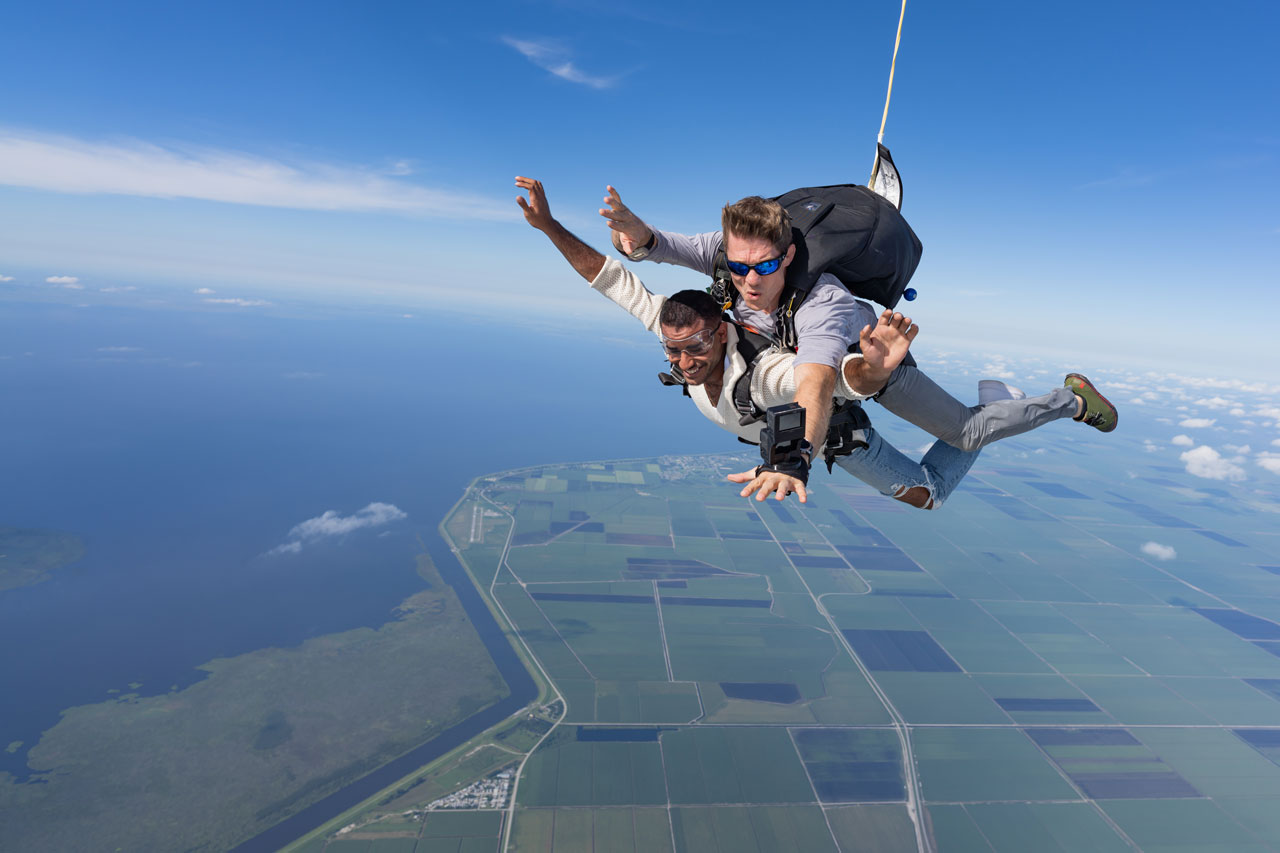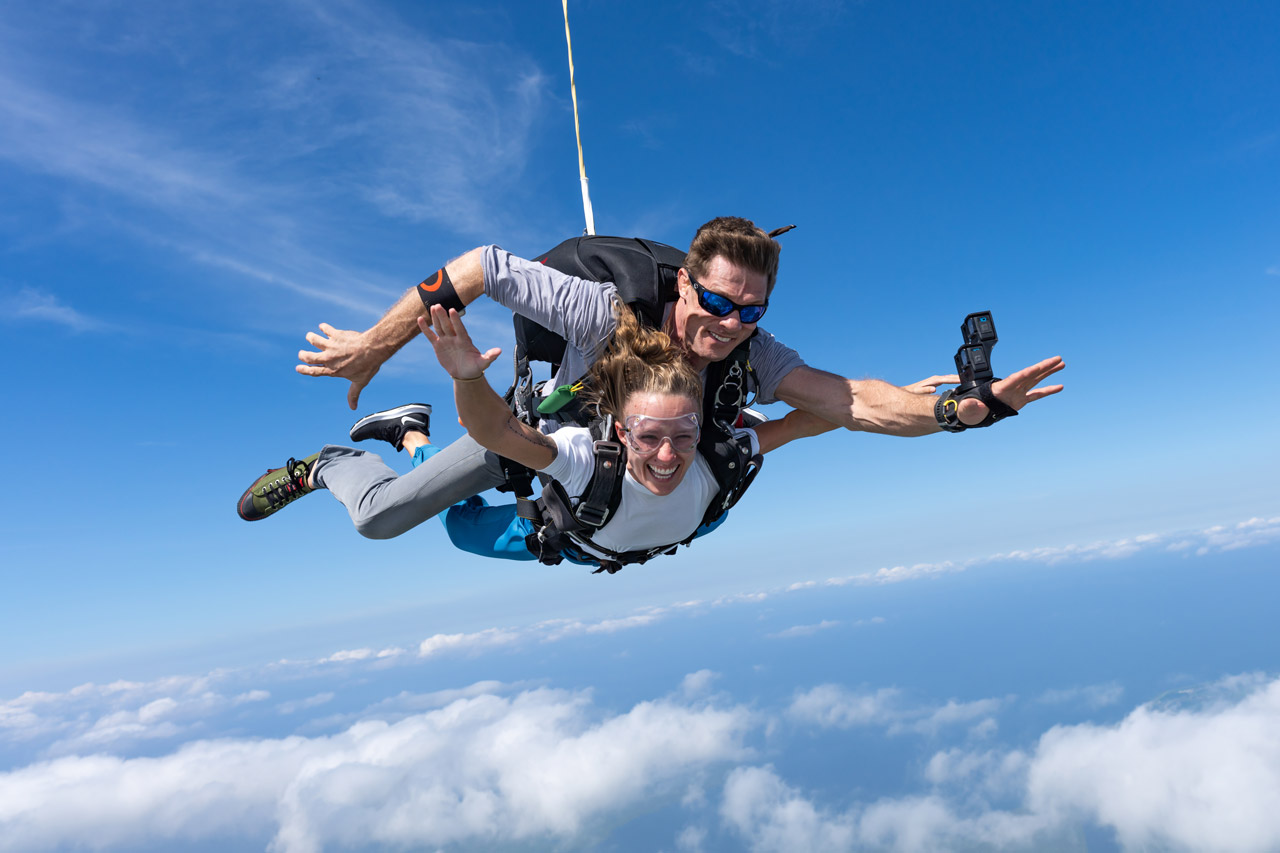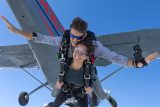Skydive Body Positions and Why They Matter
Skydiving
Posted by: Skydive Palm Beach
4 months ago
You’ve scheduled your tandem skydive, and you’re pumped. Maybe you’ve recently watched some skydiving videos and wondered about the mechanics of it all – some people falling feet first, headfirst, or belly to earth. Should you know about all these different ways of flying before jump day? What is the body position for skydiving tandem? How do you control your body while skydiving for the first time? No worries – we’ve got you! This article will break down the different freefall positions and why they matter, helping you feel ready for your big day.

Skydiving Positions: What Are They?
Most people don’t realize that skydiving is a full-fledged sport with various styles, or disciplines, each requiring a different type of freefall position. A few examples include:
- Head-Up: Falling feet first toward the ground.
- Head-Down: Falling headfirst toward the ground.
- Tracking: Falling while moving forward horizontally at speed.
- Relative Work (Belly-to-Earth): Where you fall with your belly facing the earth.
Each discipline has its own unique skill set. Falling in different orientations uses various parts of your body to maintain control, stability, and direction.
For your tandem skydive, the focus will be on the belly-to-earth position, which is ideal for stability and is the foundation of skydiving. Let’s break down what you need to know to control your body while skydiving, starting from your exit fromthe aircraft.
The Arch: The Foundation of Skydiving
What is the most important task in freefall? You’ll hear this term a lot: Arch! Arching is the cornerstone of a stablefreefall position. For a proper arch, you want your:
- Hips Low: Push your hips forward to make them the lowest point of your body. Avoid arching from your chest; the arch should originate from your hips. This helps ensure stability and control.
- Chin Up: Keep your chin up and look forward. This not only helps you maintain the correct body position but also ensures better video footage if your jump is being filmed. Looking down will only capture the top of your head — so keep your head up, smile, and enjoy the moment!
- Arms Relaxed: Stay loose yet controlled. Once your instructor gives the go-ahead, release your arms to fully experience the sensation of freefall. Your arms will be relaxed next to you with 90-degree bends at the elbows. Putting your arms out will help create drag and can assist with stabilizing your body position.
- Legs Back: Keep your legs relaxed and extended behind you. Your instructor might suggest thinking about placing your feet on your butt, (or technically, their butt). Avoid piking, straddling, or kicking your legs.
Think of your body as resembling a banana. The arch isn’t just about looking good in the air; it’s the foundation of control, safety, and a smooth skydive. Looking good? That’s just a lucky side effect.
Relative Wind: What You Need to Know
Once you reach jump altitude and exit the aircraft, you’ll encounter what’s called relative wind — the air that is coming toward you due to the plane’s forward movement. This concept is critical for understanding why you don’t experience a stomach-drop sensation when you exit. You can think of your exit as more of a transition into freefall. You exit vertically (belly-to-relative wind) and transition into freefall (belly-to-earth).
When you exit, your instructor will guide you to position yourself perpendicular to the relative wind setting you both up for a more stable exit. This is why your body position matters. The proper position during exit helps ensure a smooth transition into freefall and sets the stage for a stable skydive. While your instructors are highly skilled and capable of managing the skydive, your participation makes a difference.
The exact exit technique may vary depending on the type of aircraft and your instructor’s preferences. However, the understanding of the relative wind remains consistent across all types of exits.
Exit Position Tips:
- Arch: We want to maintain this position for the entirety of our freefall!
- Look at the Plane: As you exit, looking back at the plane helps you naturally maintain the correct body position.
- Hands on Your Harness: Keep your hands secure on your harness.
- Relax: Take a deep breath. You did it! You jumped out of an airplane! Relax and enjoy the view.
This combination creates a stable and efficient exit, allowing your instructor to fly the skydive effectively behind you.

Let’s Jump
Skydiving is a thrilling and dynamic activity that involves much more than simply falling. By understanding the different body positions and why they matter, you can approach your tandem skydive with confidence. Remember, your instructor is there to guide you every step of the way, but your active participation is what makes the experience truly unforgettable. So, get ready to arch, fly, and savor the ride of a lifetime. Haven’t booked yet? What are you waiting for? Book your jump today!
Categories:
You May Be Interested In:

Can You Talk While Skydiving?
2 weeks ago by Skydive Palm Beach

The Most Unforgettable Engagement Idea, EVER!
1 month ago by Skydive Palm Beach

3 Phases of Skydiving: What Happens After You Exit the Aircraft?
2 months ago by Skydive Palm Beach

What Happens After the First Jump?
2 months ago by Skydive Palm Beach
